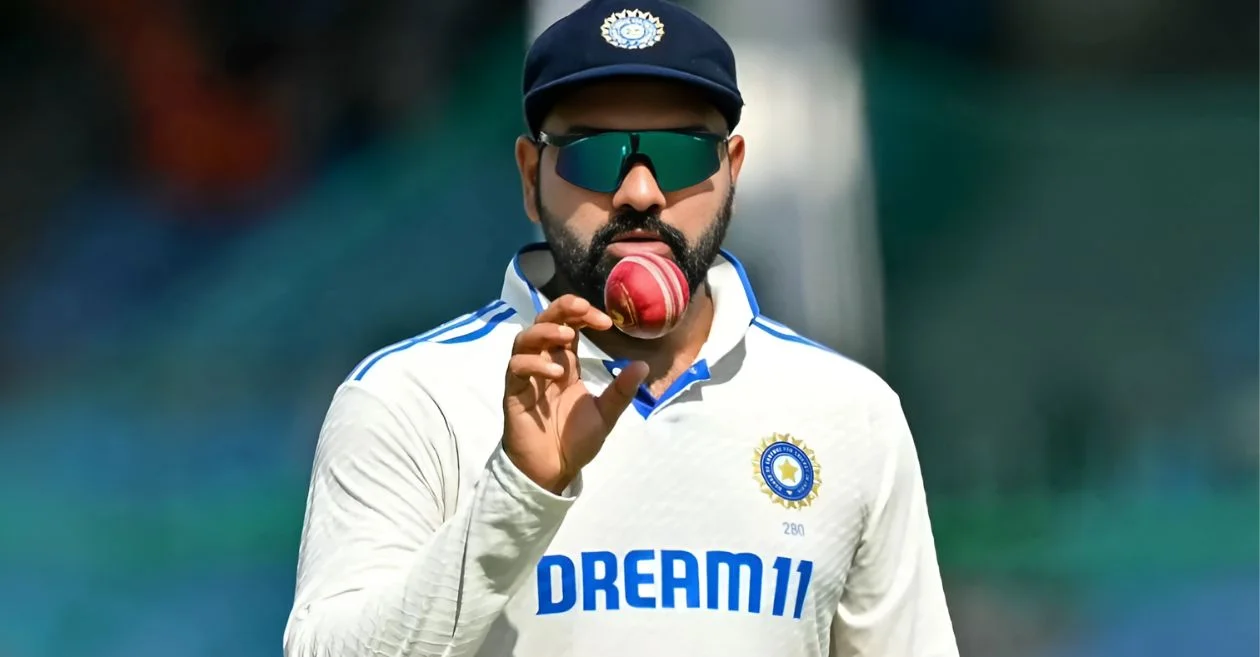For nearly a decade, India’s dominance in home Test matches was nearly untouchable, with their performances on subcontinental pitches standing as a testament to their cricketing strength. Between 2013 and 2022, India played 42 home Test matches, losing just two—an incredible record that demonstrated their ability to outplay opponents in familiar conditions. However, the cricket landscape in 2024 has taken a drastic turn. India’s formidable dominance has begun to show cracks, highlighted by two significant defeats at home, including a historic loss to New Zealand in the first Test of the year at Bengaluru’s M. Chinnaswamy Stadium.
New Zealand’s eight-wicket triumph not only marked their first Test victory on Indian soil in 36 years but also exposed serious vulnerabilities in India’s current approach, particularly under Rohit Sharma’s leadership. With three defeats in 12 home Tests since 2023, India’s recent record is a stark departure from their earlier success. For the Men in Blue, this decline raises questions about their ability to maintain their once impenetrable fortress at home.
A Decline in Dominance Under Rohit Sharma
Since taking over as captain, Rohit Sharma has faced an unexpected challenge: maintaining India’s dominance in home conditions. Between 2023 and 2024, India has lost three out of 12 Test matches at home, all under Rohit’s leadership. This is a concerning statistic, considering that India had previously made their home turf a near-invincible fortress. The most recent and perhaps most painful of these defeats came against New Zealand in the opening Test of 2024, where the visitors secured a resounding eight-wicket victory. This loss, coupled with others, suggests that India’s once unstoppable momentum has stalled, and the reasons behind it are multifaceted.
New Zealand’s triumph in Bengaluru, in particular, was a landmark moment. It was their first victory in India since 1988, breaking a 36-year streak of futility in subcontinental conditions. More than just a loss, this defeat raised eyebrows because of India’s shockingly low first-innings total of 46 runs. Despite valiant efforts to recover in the second innings, India failed to regain control, revealing deeper issues within the team—especially in their decision-making and execution on the field. The fact that this occurred under Rohit’s leadership has put additional pressure on his captaincy and raised concerns about his ability to navigate tough situations.
New Zealand’s Historic Win: A Lesson in Resilience
The first Test of 2024 in Bengaluru will be remembered not only for India’s shortcomings but also for New Zealand’s historic performance. The Black Caps achieved what many thought impossible—an eight-wicket victory on Indian soil, a feat last accomplished by New Zealand in 1988. Their win was not just a testament to their skill and determination but also highlighted India’s struggles in handling pressure.
New Zealand’s resilience was particularly evident during their ninth-wicket stand in the first innings, when Tim Southee and Rachin Ravindra stitched together a crucial 137-run partnership. At 233/7, India had the Kiwis on the ropes, but Rohit Sharma’s inability to rotate his bowlers effectively or set more aggressive field placements allowed the visitors to recover. This partnership ultimately tilted the match in New Zealand’s favor, leaving India chasing the game from that point on. The manner in which India allowed the lower order to bat freely without much resistance is reflective of deeper issues in the team’s approach.
Tactical Missteps: Five Key Errors by Rohit Sharma
While New Zealand played brilliantly, India’s defeat can be attributed in part to several tactical errors made by Rohit Sharma throughout the match. These decisions not only cost India crucial moments but also allowed New Zealand to capitalize on the smallest openings. Here are the five most glaring mistakes in Rohit’s captaincy during the Bengaluru Test.
1. Choosing to Bat First on a Bowler-Friendly Pitch
Rohit Sharma’s decision to bat first after winning the toss was the first major error. The pitch in Bengaluru had moisture and bounce early on, offering assistance to New Zealand’s seamers. By choosing to bat first, India exposed their batsmen to challenging conditions, and the result was a disastrous collapse for 46 runs in the first innings. A more cautious decision to bowl first might have allowed India to exploit the conditions, potentially restricting New Zealand to a lower score and shifting the pressure onto them.
2. Excluding Akash Deep from the Playing XI
Another key mistake was leaving out seamer Akash Deep from the playing XI. Given the pitch conditions, Akash Deep’s ability to generate swing and bounce could have made a difference, particularly when India struggled to break through New Zealand’s middle and lower order. Rohit’s conservative team selection limited India’s bowling options and cost them the chance to put more pressure on the visitors. The omission of Akash Deep, in hindsight, appears to have been a significant miscalculation.
3. Letting Southee and Ravindra Build a Game-Changing Partnership
One of the pivotal moments of the match was the 137-run partnership between Tim Southee and Rachin Ravindra for the ninth wicket. At 233/7, India had a golden opportunity to close out New Zealand’s innings and take control of the match. However, Rohit’s passive field placements and his failure to make proactive bowling changes allowed the partnership to flourish. The lack of aggression during this phase handed the advantage to New Zealand, who extended their lead to over 300—a defining moment that swung the match irreversibly in their favor.
4. Delayed Use of Ravichandran Ashwin on Day 4
Perhaps the most puzzling decision was Rohit’s delay in bringing Ravichandran Ashwin into the attack on the final day. Despite the pitch showing signs of turn, Ashwin was introduced too late to make a meaningful impact. As India’s most experienced spinner, Ashwin should have been brought on earlier to break partnerships and apply pressure on New Zealand. By the time he was introduced, the match was already slipping away from India, and Ashwin’s late arrival diminished their chances of turning the tide.
5. Defensive Field Placements and Lack of Urgency
Throughout the match, Rohit’s field placements were uncharacteristically defensive. Instead of setting attacking fields that could lead to wickets, he opted for a more containment-focused approach, allowing New Zealand’s batsmen to rotate the strike easily and build partnerships. The lack of urgency in the field was evident in the body language of both the captain and the players, which only compounded the team’s struggles. In critical moments, Rohit failed to take the bold, proactive decisions that could have altered the course of the match.
India’s Batting Woes: The Collapse That Defined the Match
While Rohit Sharma’s captaincy decisions have been a focal point of criticism, India’s batting performance was equally concerning. The team’s first-innings total of 46 was a shocking collapse, marking one of their lowest-ever scores in Test cricket. This sudden downfall exposed the team’s vulnerability against disciplined pace bowling on challenging surfaces. New Zealand’s bowlers, led by Trent Boult and Tim Southee, exploited the conditions masterfully, and India had no answers to the relentless pressure.
The second innings saw a more determined effort, with Kohli’s 70 providing some hope, but it wasn’t enough to undo the damage caused by the first innings. India’s inability to build partnerships and apply pressure on New Zealand’s bowlers left them playing catch-up for the rest of the match. This batting collapse, combined with the tactical errors in the field, created the perfect storm for India’s defeat.
The Road Ahead for India and Rohit Sharma
India’s back-to-back losses in 2024 have sent shockwaves through the cricketing world, especially given their historic dominance at home. Rohit Sharma, as captain, now faces an uphill battle to reverse the team’s fortunes and restore confidence in the squad. The upcoming matches will be crucial in determining whether India can bounce back from this slump or if the cracks in their armor will continue to widen.
For Rohit, the key will be learning from the mistakes made in the Bengaluru Test. The tactical errors, conservative approach, and passive field placements must be addressed if India hopes to regain their status as a dominant force at home. With more challenging series on the horizon, Rohit’s leadership will be put to the test, and his ability to adapt and make bold decisions will determine India’s trajectory in the coming months.
Please check for information on the best betting sites in India – https://selectory.org/best-betting-sites/















